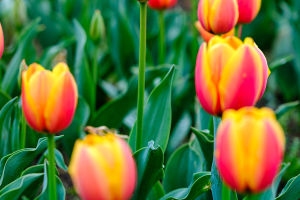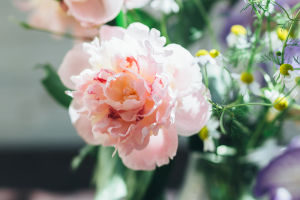
Heady Flowers

Lilac is a beautiful and intoxicating flower whose unique appearance and fragrant scent make it popular in gardens around the world.
Discuss the geographical distribution, growth environment requirements, and growth conditions of lilac flowers in different seasons. Knowing this information will help you better cultivate and appreciate these stunning flowers.
Here is a description of what lilac flowers look like:
1. Flower Color: Lilac flowers are best known for their bright purple color, but they can also come in many different shades of purple, including deep purple, lilac, and blue-violet. White, pink, and lilac varieties are also sometimes seen, but purple is the most common.
2. Flower shape: The flowers of lilac flowers are in the form of conical inflorescences, usually composed of multiple small flowers. Each floret is bell-shaped or tube-shaped, with a petal that has a large opening.
Related
 Choose sustainable flowers and containers to help shape a better future together.
Choose sustainable flowers and containers to help shape a better future together.
 Tulips: Emblem of Beauty, Love, and Renewal Across Cultures.
Tulips: Emblem of Beauty, Love, and Renewal Across Cultures.
 Herbal Peony is mesmerizing in its elegance and beauty.
Herbal Peony is mesmerizing in its elegance and beauty.
 A fragrant addition to your home.
A fragrant addition to your home.
 Explore the art and etiquette of flower arrangement, where the beauty of nature and the elegance of society are explored.
Explore the art and etiquette of flower arrangement, where the beauty of nature and the elegance of society are explored.
 Cacti: Hardy, Diverse, and Armed Survivors of the Americas.
Cacti: Hardy, Diverse, and Armed Survivors of the Americas.
3. Flower size: Lilac flowers are medium-sized, usually about 1 to 2 inches (2.5 to 5 cm) in diameter. Each inflorescence can contain multiple florets, making the entire flower fuller.
4. Petal texture: The petals of lilac flowers are thin and soft, and are very delicate to the touch. The petals are usually five-petaled, but varieties with four to six petals are also available. There is a subtle texture and shine on the petals that add to their beauty.
Overall, lilacs, known for their striking purple color, bell-shaped flowers, and soft petals, are a very popular garden plant, often used to decorate gardens or as part of bouquets, bringing Pleasant sights and fragrant aroma.
The geographical distribution and environmental requirements for the growth of lilac flowers depend to a certain extent on climatic conditions. The following are its main characteristics:
Geographical distribution:
Lilac is native to southeastern Europe and is mainly distributed in the Balkans and Apennines. However, lilacs have been introduced and are widely grown around the world, including in North America, Asia, and Australia. It can grow luxuriantly under suitable climatic conditions.
Environmental requirements:
1. Climate: Lilacs like a mild climate, and the suitable growth temperature range is 18 to 24 degrees Celsius. They require a climate with four distinct seasons, including cold winters and warm summers. This helps them form flower buds to bloom in the spring.
2. Sunlight: Lilacs like full sun, usually requiring at least 6 to 8 hours of direct sunlight per day. In full sun, lilacs will flourish more and produce more blooms.
3. Soil: Lilacs are not particularly demanding on soil, but they like well-drained soil, preferably loose soil rich in organic matter. Making sure the soil drains well can prevent root rot.
4. Humidity: Lilacs are generally tolerant of varying humidity conditions, but it’s best to keep them moderately humid and not too dry or wet.

Growth conditions in different seasons:
- Spring: Spring is the main growing and blooming season for lilacs. Lilacs begin to germinate and bloom when temperatures begin to warm up after a cold winter, usually between April and May. This is the season when lilac flowers are at their most beautiful and fragrant.
- Summer: Summer is the growing season for lilacs as they continue to grow and develop new leaves. During the hot summer months, ensuring adequate water is important for their health.
- Autumn: Autumn is the dormant period of lilac flowers. Lilacs will stop growing before temperatures begin to drop and have buds ready before the cold winter months set in.
- Winter: Winter is the dormant period for lilacs and their leaves usually fall off, leaving only bare branches. Lilacs can tolerate cold temperatures, but in extremely cold areas, additional protection, such as mulching or screening, may be needed to protect the roots from freezing.
Lilacs thrive in areas with mild climates that provide plenty of sunlight and well-drained soil. Understanding growth conditions during different seasons can help you better care for and appreciate these beautiful flowers.
Overall, lilacs are plants that require a mild climate and a suitable environment, but once the right conditions are provided, they bloom with charming purple flowers in spring, bringing a touch of romantic color and fragrance to the garden. aroma.
Understanding the growth characteristics and environmental requirements of lilacs can help you better care for these beautiful plants so that they look their best in different seasons.
Whether strolling among the blooms in spring or enjoying their bloom in summer, lilacs are a treasure for gardening enthusiasts and flower connoisseurs alike.